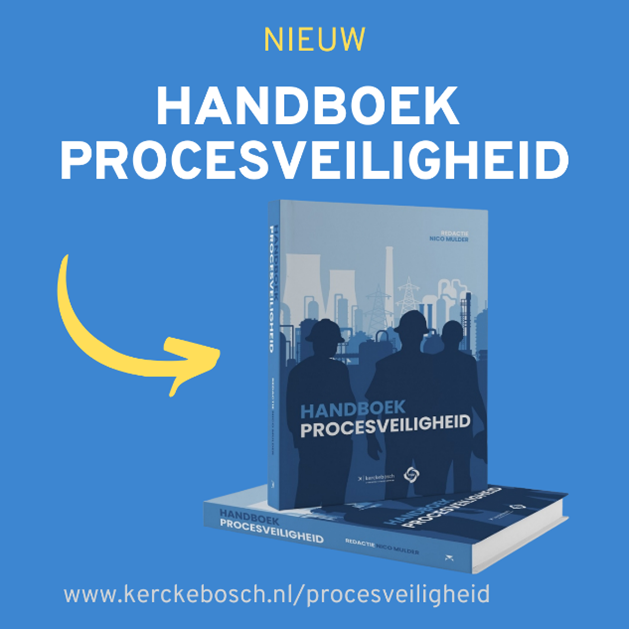Nico Mulder's new Process Safety Manual is an umbrella reference work covering everything there is to know about process safety. Especially for Safety Delta Nederland, Nico tells us more about the book and the way it can contribute to safety within organisations.
Why was the book written and what was your role?
Process safety is a very broad topic: there is no one person who can master the entire working area in detail on his own. Teamwork is therefore required, but for teamwork, those involved must talk from a shared overall picture. What was lacking in the Dutch language area was an umbrella reference work, which links the individual specialities and makes complex subject matter accessible. Dhe book contains contributions from 23 authors. I was responsible for coordinating the content of the I was responsible for coordinating the content of the book. My client PHOV gave me almost carte blanche. (Post Higher Education Safety) to bring in a red thread.
What can one do/achieve with the book?
The book outlines the interplay between technical design, maintenance and operation on the one hand, and legislation and risk management on the other. on the one hand, and legislation and risk management on the other. It also looks at culture, competencies and communication, or the human factor. the human factor. The individual contributions are in-depth, always seen from a practical perspective. Where necessary, reference is made to specialist literature. These are These are mentioned directly on the pages where they are relevant. Complex subject matter is thus made accessible, both for professionals and managers. managers. The professional finds concrete tools, the manager gets an overview of what manager gains an overview of what he or she might encounter. A recurring point of discussion between management and professionals is the This book zooms in on the how and what of various types of safety studies. This book zooms in on the how and what ofvarious types of safety studies. A good example of this are the chapters on QRA and OBRA. These studies will remain the domain of specialists, but for me as a generalist the steps to be taken are now clearer than before. clearer than before. The book can also be used in safety training courses, so that 'fresh' safety experts can start working with process safety more quickly. process safety more quickly.
How do you hope the manual can lead to improvement?
Process safety touches on various fields of expertise, each of which requires specific expertise. This varies from lawyers and business experts to technical designers, operators and mechanics. In addition, safety culture is important, which is the field of work of occupational and organisational psychologists. All these people make an important contribution to process safety, but do not speak each other's language, if they come into direct contact with each other at all. This book offers insight into the separate specialisms and their mutual connections, and opens up possibilities for discussion. I therefore see this book as a concrete aid in the pursuit of making the Dutch process industry the safest in the world by 2030.
The book was written specifically for the Netherlands. Is this for a reason?
My experience is that it is often difficult to translate American literature to our practical situation in the Netherlands. our practical situation in the Netherlands. The literature standard is set by the Centre for Chemical Process Safety, if only by the number of books that organisation has organisation has published. These books breathe American legislation and regulations, and often refer to the elements of the OSHA PSM regulation. of the OSHA PSM regulation. On first reading, I myself found the terms used terms such as 'conduct of operations' and 'operational readiness' were difficult to understand. European and Dutch legislation such as Sevevo, PED and the Machinery Directive some leeway for their own considerations, provided that the stipulated obligations are met. An example of this is the periodic An example of this is the periodic inspection of pressure equipment: if a user can demonstrate that the wear and tear of a pressure wear of a pressure device is slow and even, it is allowed - of course in consultation with the consultation with the inspection authority - it is allowed to deviate from the standard 4-year period. This is called risk-based inspection. In order to be able to make such considerations together permit issuers, managers, engineers, operators and insurers must all speak the same language, and confusion must be avoided. speak the same language, and confusion about foreign terminology should be confusion about foreign terminology should be avoided wherever possible. This made writing in Dutch a logical step. Dutch became a logical step.
What was your motivation for becoming an editor of the book?
The immediate cause was that PHOV asked me to help think about the content of a new book on process safety. I was captivated by the underlying aim: to set up a standard work on process safety, by and for professionals from the Dutch work field. So when PHOV asked me to be the editor, I did not have to think for long. With this I could make a broader contribution to a safe working environment than is normally possible as an employee in industry or as a consultant. It was also a response to a call from the distant past: as a schoolboy I heard the blast of a large industrial explosion. I remember the confusion of the whole class at that moment, and the fear afterwards when we realised what had happened and that family members might be involved. I sincerely hope that this book will help to prevent such events from happening again.
The Process Safety Handbook is available from Kerckebosch Publishing-Study Centre





